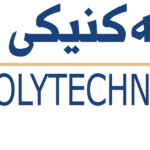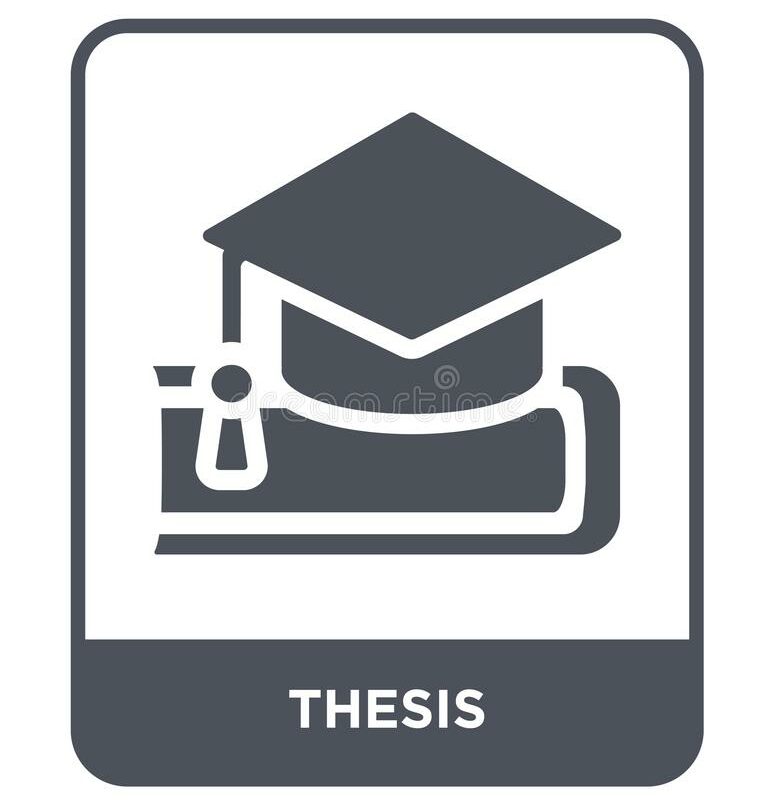- Hana jalal bapir
- hana.j.bapir@outlook.com
- +9647504438481
- hana reasearch-2023-8-5 93 93
-
المستخلص
تهدف الدراسة في جانبه النظري والميداني الى بيان دورالالتزام مبادئ حوكمة الشركات في تخفيض المخاطرالأئتمانية في المصارف التجارية من وجهة نظر العاملين في المصارف التجارية في مدينة أربيل، من خلال التعرف على المفاهيم و المبادئ الاساسية لحوكمة الشركات و ايضا تسليط الضوء على مفهوم المخاطر الأئتمانية ولتحقيق أهداف هذه الدراسة واختبار فرضياتها تم اعداد استمارة استبانة مكونه من ثلاثة محاور، والتي تم توزيعها على العاملين في المصارف التجارية في مدينة أربيل، وبلغ عدد الاستمارات الموزعة (95) استمارة تم استرداد (85) استمارة منها وكانت (80) استمارة صالحة للتحليل، ليتم بعد ذلك تحليل النتائج باستخدام برنامج الحزمة الاحصائية للعلوم الاجتماعية (SPSS))من خلال استخدام تحليل الارتباط والانحدار الخطي البسيط واختبار ( test- t ) لإختبار فرضيات الدراسة و إمكانية يعمم نتائجها على مجتمع الدراسة.
وتأسيسا على ما تم التوصل اليه من نتائج التحليل فلقد تماستخلاص عدد من الاستنتاجات كان من ابرزها: يؤدى ازدياد في المخاطر الائتمانية إلى مجموعة من الآثار والنتائج السلبية التي تؤثرعلى كل من المصرف والسوق والعملاء والتي يتوسع نطاقها يشملالاقتصاد القومي ككل فتؤثر في بيئة الاستثمار، وارتباك الموازنة العامة للدولة، والدخل القومي، والميزان التجاري، وتقليص معدلات النمو الاقتصادي، إن التطبيق السليم لمبادئ حوكمة الشركات يؤدي الى انخفاض بنسبة كبيرة للخطر، الذي يرتبط، او يرافق عملية منح الائتمانية وبالنسبة لقرار الائتمان للمصارف، تؤدي دقة الإفصاح والشفافية كنتيجة للتطبيق السليم لمبادئ حوكمة الشركات إلى زيادة مصداقية بالتقارير المالية فتؤثرفي زيادة ثقة المساهمين وتلبية الحاجات صناع القرار.
وكان من أهم توصيات الدراسة: ضرورة التزام المصارف التجارية العاملة في مدينة أربيل بالافصاح والشفافية لاعداد التقارير المالية بشكل دوري، وبإنتظام لما له من دور في زيادة ثقة لمستخدميالتقارير المالية و بالتالي زيادة الثقة المستثمرين الحاليين و المستقبلين، فضلا عن ضرورة فتح الدورات التدريبية من قبلالهيئات المعنية لتوضيح أهمية التطبيق مبادئ حوكمة الشركاتوأثرها في تخفيض المخاطر الائتمانية وذلك لزيادة الوعي لدى المساهمين والإداريين والمستثمرين بأهمية حوكمة الشركات، ضرورة وجود اقسام خاصة لإدارة المخاطر الائتمانية في المصارف لتقليل المخاطر الائتمانية لادنى حد، مع ضرورة تطوير قواعد مكتوبة لحوكمة الشركات والتأكيد على دمجها بالنظام القانوني، بحيثتصبح قانوناً يعاقب من يخالفه مما يساهم في التطور والنمو الاقتصادي.
الكلمات الإفتتاحية: حوكمة الشركات، المخاطر الائتمانية
- Erbil Technical Administrative College
- Accounting
- Accounting
- saleem saleem hussein
- salim.s.husain@gmail.com
-
http://Abstract The study aims to show the impact of accounting measurement and disclosure by the requirements of the International Accounting Standard (IAS8) - accounting policies and changes in accounting estimates and errors - in enhancing the quality of financial reports and achieving the objectives of the study and test its hypotheses. The questionnaire form was relied upon, as the opinions of academics, chartered accountants, and accountants working in companies in the city of Erbil were polled on the subject, and (210) individuals were selected from them. The study relied on the method of descriptive statistical analysis, analysis of study variables, and testing of their hypotheses using the Statistical Package for the Social Sciences (SPSS) program. The study reached a set of conclusions, the most important of which is that the accounting measurement and disclosure in the financial statements as required by the International Accounting Standard (IAS8) serves the users of these reports, because it indicates the fair presentation of the contents of these statements and helps to understand financial performance, and all of this will have a significant impact on improving users' decisions. As for its most important recommendations: It is necessary to conduct courses for owners of economic units, managers, and accountants, in which it shows the importance of applying the accounting standard (IAS8) with a high degree of transparency, accuracy and objectivity, which in turn improves the quality of financial reports.
- Erbil Technical Administrative College
- techniques Accounting
- Professor. Dr. Parzheen Shex Mohammed Aziz
- Azad Abdullah Ameen
- azad.ameen@charmouniversity.org
- +9647721068874
-
The objective of this study is to delineate the challenges associated with addressing complex optimization issues, with a specific focus on metaheuristic algorithms. A comprehensive investigation was undertaken to explore the principles and categories of these algorithms, gain a deeper understanding of the issues they present, and develop effective strategies to overcome them. To challenge these issues, the study explores metaheuristic algorithms, which are known for their effectiveness in solving such problems. However, these algorithms often struggle with getting stuck in local optima and maintaining a balance between exploration and exploitation. Additionally, they exhibit poor searchability and exploitation performance.
To address these challenges, this research work introduces three different algorithms: a modified version of child drawing development optimization MCDDO, a hybrid algorithm combining child drawing development optimization with harmony search CDDO-HS, and a novel metaheuristic called the social psychology interaction behavior algorithm SPIBA, inspired by human social psychology interactions.
The performance of these algorithms is evaluated using various benchmark test functions, including classical and CEC-C06 2019 benchmark functions. Statistical methods, such as ranking and the Wilcoxon rank-sum test, are used to compare the results of these algorithms with the original algorithms, CDDO, HS, and other popular algorithms.
In the beginning, two different approaches were proposed, namely MCDDO and CDDO-HS. The main objective of both techniques is to overcome the issues that the CDDO faces. The CDDO is an example of a human-based metaheuristic approach that may encounter challenges such as getting trapped in local optima, demonstrating suboptimal performance in the exploration phase, and experiencing stagnation in the nearest optimal solution.
The first proposed MCDDO incorporates four key mechanisms: iterative pattern memory PM updating during the exploitation phase, where new experiences are compared with the child's current drawings; a change in the primary rule employed during the exploitation phase; parameter tuning to strike a balance between exploration and exploitation phases; and preservation of the best solution obtained in each iteration and comparing new solutions with the best solution during the exploration phase. Following the completion of the evaluation, the statistical findings indicate a consistent superiority of the proposed approach over standard algorithms, as evident in both average and p-value results. Specifically, out of the nineteen classical test functions and ten CEC-2019 benchmark test functions, the proposed approach demonstrated better performance in thirteen and nine instances, respectively. These results were then compared with those obtained from the JAYA, SCA, ChOA, DA, GPSO, and BOA algorithms. The comparative analysis confirmed that the proposed approach outperformed all other metaheuristic algorithms in four out of the ten CEC-2019 benchmark test functions.
The second proposed method, CDDO-HS, represents a hybridization between CDDO and HS and integrates two crucial mechanisms. Firstly, it relocates the PM to the algorithm's core, updating it with each iteration using the HS algorithm. Secondly, it establishes the PM size at 80% of the overall population, aiming for optimal exploration. After the evaluation, the statistical results reveal that the hybridization approach consistently outperforms standard algorithms in both average and p-value outcomes. Specifically, in comparison with CDDO, it achieves better results in eleven out of nineteen classical test functions and all functions from the CEC-2019 benchmark. When compared with HS, the hybrid approach excels in sixteen out of nineteen classical test functions and seven out of ten CEC-2019 benchmark test functions. These results were then pitted against the ChOA, BOA, FOX, GWO-WOA, WOA-BAT, and DCSO algorithms. The study proved beyond a reasonable doubt that the suggested method is better than all other metaheuristic algorithms in six of the ten CEC-2019 test functions.
In the subsequent phase, SPIBA, an innovative metaheuristic optimization algorithm inspired by social psychology, interaction behavior, and social interaction—processes involving the stimulus or response of two or more individuals—was developed. These fundamental ideas have been easily incorporated into SPIBA's core, which operates as a single-object and population-based algorithm. SPIBA's performance was compared to that of the ChOA, BOA, FOX, GWO-WOA, WOA-BAT, and DCSO algorithms. The exploration and convergence measures were utilized to assess its success. Their analytical results definitively indicated that the proposed approach beat all other metaheuristic algorithms in six of the ten CEC-2019 benchmark test functions.
Additionally, SPIBA was applied to equipment, real-world engineering, and applied science challenges, specifically pressure vessel design and the analysis of the pathological IgG fraction in the nervous system. When working in pressure vessel design and compared with eight other algorithms—WOA, GWO, FDO, CFDO, WOAGWO, KMGWO, RFSO, and MFDO—SPIBA appeared as the top-performing algorithm. It showed an average solution quality of 6.01E-05 and the lowest standard deviation of 2.00E-04, guaranteeing the top position. In the context of the "Nervous System's Pathological IgG Fraction" application problem, a comparison between SPIBA and Leo revealed a significant improvement in the proposed algorithm's performance.
- Erbil Technical Engineering College
- Information Systems Engineering
- AI - Optimization
- Diyar Yousuf mirza
- diyar.mirza@mhe-krg.org
- +9647504454348
- DYAR YUSIF MRZA
-
تهدف الدراسة الحالية إلى إبراز الدور الذي تمارسه ادارة المعرفة في أخلاقيات الوظيفة من خلال تبني أبعاد ادارة المعرفة المتمثلة ب (توليد المعرفة واكتسابها، تنظيم المعرفة وتخزينها، مشاركة المعرفة ونشرها، تطبيق المعرفة) والتي تعد ركيزة أساسية لأية منظمة تسعى إلى تفاعل زبائنها الداخليين والخارجيين، كونها تعد وسيلة مهمة لتحقيق التميز بمختلف عناصرها، فضلا عن كونها نهجا إستراتيجيا لمشاركة العاملين فيما بينهم.
وتعتبر أخلاقيات الوظيفة موضوعا حيويا في ساحة الأعمال والمنظمات، حيث تسهم في بناء مجتمعات وأماكن عمل صحية ومزدهرة. تزايدت أهمية الأخلاقيات في الوظيفة مع تطور التكنولوجيا وانتشار الاقتصاد المعرفي، حيث أصبح من الضروري التفكير في كيفية تطبيق مبادئ الأخلاقيات في سياقات تتسم بالتعقيد والديناميكيات الجديدة تتناول هذه الرسالة دراسة "إدارة المعرفة" وكيفية تأثيرها على أخلاقيات الوظيفة.
ان الممارسات الغير اخلاقية في إدارة المعرفة تشير إلى استخدام أو تداول المعرفة بطرق غير أخلاقية أو غير قانونية، مثل سرقة الملكية الفكرية، أو تسريب المعلومات السرية. يتمحور التساؤل الرئيسي للرسالة حول كيفية تأثير هذه الظاهرة على أخلاقيات الوظيفة في مختلف القطاعات والمنظمات ، باستخدام منهجية بحثية شاملة، تم جمع البيانات وتحليلها من خلال مراجعة أدبية بالاعتماد على الأسلوب التحليلي في الجانب العملي، إذ تم جمع المعلومات والبيانات عن طريق استمارة الاستبانة بأستخدام جوجل فورم كأداة رئيسة للحصول على البيانات والمعلومات والتي اعدت لهذا الغرض. وتم تشخيص المتغيرات الرئيسية والمتغيرات الفرعية وقياسها.
وعليه سعى الباحث إلى الانطلاق من مشكلة رئيسية والتي تم التعبير عنها بعدد من التساؤلات الفكرية والميدانية من خلال تشخيص واقع وزارة التعليم العالي والبحث العلمي ومدى امتلاكها للمتغيرات الدراسة الحالية بأبعادها محاولا التعرف على العلاقة والتأثير ما بين متغيرات الدراسة والفروقات المعنوية بينهما ودراستها من خلال الإجابة على تساؤلات الدراسة. وللإجابة على تساؤلات مشكلة الدراسة كون هذه المتغيرات من المواضيع الحديثة والمهمة في بيئة أقليم كوردستان العراق، تمت صياغة مخطط فرضى يعكس طبيعة العلاقة بين المتغيرات الرئيسية ونوع التأثير في الوزارة المبحوثة، إذ تم الاعتماد على مجموعة من الفرضيات واختبارها باستخدام الوسائل الإحصائية وفق برنامج (SPSS- 26)، وتم تحكيم استمارة الاستبانة من قبل عدد من السادة المحكمين في حقل الاختصاص، وتم توزيع (216) إستمارة من خلال نظام جوجل فورم ، ( 207 ) استمارة صالحة للتحليل وبنسبة إستجابة (95.8%).
وبعد تفريغ البيانات وتحليلها تم تشخيص الحقائق الميدانية للمنظمة المبحوثة مجتمع الدراسة والعينة المبحوثة وتوصلت إلى مجموعة من الاستنتاجات من أهمها: تبين أن إدارة المعرفة تمثل نهجاً تحليلياً يسمح للمنظمات بأن تكون أكثر قابلية للتكيف مع احتياجات التغيير البيئي، مما يسمح باستثمار الفرص الأكثر جاذبية والحصول على قيمة أكبر لخدمة المستفيدين منها، وان الوعي بأخلاقيات المعرفة له دور كبير في توجيه الموظفين والمديرين لاتخاذ قرارات أخلاقية تتعلق بالمعرفة والمعلومات، كما بينت نتائج الدراسة وجود علاقة إيجابية وقوية بين أخلاقيات الوظيفة وإدارة المعرفة، وان الاهتمام بعملية مشاركة المعرفة أو نشرها أو تطبيقها يكون له تأثير أيجابي على السلوك الأخلاقي فيما يتعلق بالنزاهة والأمانة، ويؤثر توليد المعرفة واكتسابها إيجابيا على النزاهة والأمانة في مكان العمل، وان تركيز الاهتمام على تخزين المعرفة وتنظيمها ومشاركتها ونشرها وتطبيقها يكون له تأثير ايجابي على السلوك الأخلاقي.
واعتماداً على الاستنتاجات التي توصلت إليها الدراسة حددت عدة مقترحات ومن أهمها :
- الوزارة كميدان الدراسة عليها ان تحاول أولا كسر الحواجز بين الوظائف التقليدية المختلفة من خلال إعادة التنظيم الداخلي للموارد والمهارات الفردية ومن ثم تطوير مؤشرات الأداء الرئيسية القدرات إدارة المعرفة.
- على الوزارة مجتمع الدراسة عليها زيادة وقياس مستويات المعرفة التنظيمية لدى عامليها وخاصة قياداتها الإدارية العليا ، لملء الفجوة بين الواقع والمخطط وبالتالي انعكاس الرؤيا الواضحة لإدارة المعرفة في نشر أخلاقيات الوظيفة في السلوك المتبع من قبل عامليها .
الكلمات الافتتاحية : إدارة المعرفة ، أخلاقيات الوظيفة ، النزاهة والأمانة ، تخزين وتنظيم المعرفة، تطبيق المعرفة ، وزارة التعليم العالي والبحث العلمي أقليم كوردستان العراق .
- Erbil Technical Administrative College
- Business Administration - کارگێڕی کار
- Administration



